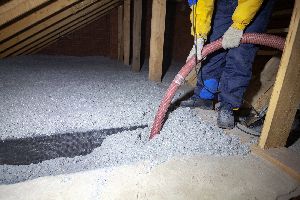3 Aspects of Blown-in Insulation You Should Know
Details
Most people picture insulation as long sheets of pink fiberglass. However, blown-in insulation, which fills spaces with small, loose bits of insulation material, is another solution for improving a home's thermal protection. The North American Insulation Manufacturers Association (NAIMA) estimates that roughly 90% of existing U.S. homes are under-insulated. If you are considering blown-in insulation, here are some key facts.
What to Know About Blown-in Insulation
1. Materials
Blown-in insulation can use a variety of materials, such as cellulose, fiberglass, and rock wool. Of these options, the most common is fiberglass, for its lower cost. Cellulose, which is made from recycled newspaper or cardboard treated with a fire retardant, is favored for its high R-value, which is the measurement of resistance to heat flow. Rock wool recycles fibers and is also highly effective at insulating.
2. Installation

Fiberglass sheets can be installed in new constructions, before drywall is in place, but they are more difficult to add to existing homes. Blown-in insulation distributes material via a hose into a space, either openly or through a hole in the wall. This method allows the bits of material to fill in nooks and crannies that aren't easily covered. It's also much faster than unrolling, cutting, and fitting sheets. Installation should be carried out by professionals who have expertise in dealing with potentially toxic fiberglass, drilling between studs, and working around obstructions like pipes.
3. Benefits
Insulation improvements can significantly increase your home's energy efficiency, saving you around 15% on heating and cooling bills. They help year-round, by locking in heat during the winter and cool air during the summer. Your furnace and air conditioning systems won't have to work as hard to maintain the thermostat setting. Additionally, blown-in insulation enhances fire resistance by filling crevices and creating airtight seals. Lastly, it can provide more soundproofing and reduce noise between rooms and from the outdoors.
Find Your Location


Get a quote


